Carmel Myers | |
|---|---|
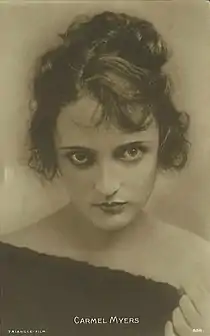 Myers, c. 1917 | |
| Born | April 9, 1899 |
| Died | November 9, 1980 (aged 81) Los Angeles, California, U.S. |
| Resting place | Home of Peace Cemetery |
| Other names | Carmel Myers Blum Carmel Schwalberg |
| Years active | 1915–1976 |
| Spouses | Isidore Kornblum
(m. 1919; div. 1923)Ralph H. Blum
(m. 1929; died 1950)Alfred W. Schwalberg
(m. 1951; died 1974) |
| Children | 3 |
| Relatives | Ruth Harriet Louise (cousin) Mark Sandrich (cousin) |
Carmel Myers (April 9, 1899[1][2] – November 9, 1980)[3] was an American actress who achieved her greatest successes in silent film.
Early life
Myers was born in San Francisco, the daughter of Isidore Myers, a Russian-Jewish rabbi who was born in Russia but raised in Australia, and Anna Jacobson Myers, an Austrian-Jew.[4] She had an older brother, Zion, and she was a cousin of director Mark Sandrich and photographer Ruth Harriet Louise. Carmel's father was active in campaigns for women's suffrage, abolition of capital punishment, and zionism. He also was a noted scholar.[5] The family moved to Los Angeles in 1905.
Myers attended Los Angeles High School but left after D. W. Griffith gave her bit part in the film Intolerance (1916), for which her father was an unpaid consultant. She continued her education at a school for young actors.[3]
Myers helped her brother become a writer and director in Hollywood.
Career
Silent film and theater

Myers left for New York City, where she acted mainly in theater for the next two years. She was signed by Universal, where she emerged as a popular actress in vamp roles. Her most popular film from this period—which does not feature her in a vamp role—is probably the romantic comedy All Night, opposite Rudolph Valentino, who was then a little-known actor. She also worked with him in A Society Sensation. By 1924, she was working for Metro-Goldwyn-Mayer, making such films as Broadway After Dark, which also starred Adolphe Menjou, Norma Shearer, and Anna Q. Nilsson.
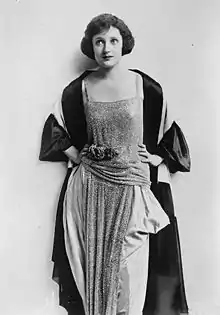
In 1925, she appeared in arguably her most famous role, that of the Egyptian vamp Iras in Ben-Hur, who tries to seduce both Messala (Francis X. Bushman) and Ben-Hur himself (Ramón Novarro). This film was a boost to her career, and she appeared in major roles throughout the 1920s, including Tell It to the Marines in 1926 with Lon Chaney, Sr., William Haines, and Eleanor Boardman. Myers appeared in Four Walls and Dream of Love, both with Joan Crawford in 1928; and in The Show of Shows (1929), a showcase of popular contemporary film actors.
Sound films, radio, and television
Myers had a fairly successful sound career, mostly in supporting roles, perhaps due to her image as a vamp rather than as a sympathetic heroine. Subsequently, she began giving more attention to her private life following the birth of her son in May 1932. Amongst her popular sound films are Svengali (1931) and The Mad Genius (1931), both with John Barrymore and Marian Marsh, and a small role in 1944's The Conspirators, which featured Paul Henreid, Peter Lorre, and Sydney Greenstreet.
In 1939, Myers performed for 13 weeks on the Resinol radio program that was broadcast twice weekly from station KHJ and carried on the Don Lee Network.[6]
In 1951, Myers had a celebrity interview TV program,[7] The Carmel Myers Show, on ABC.[8] In 1952, she formed Carmel Myers Productions, a firm for producing radio and TV programs. The company's productions included Mark Hellinger Tales, a transcribed series of 30-minute radio dramas with Edward Arnold as narrator and Cradle of Stars, a 30-minute filmed TV series with Gregory Ratoff as director and star.[9]
Later, she focused on a career in real estate and her perfume distribution company. In 1976, Myers was one of the very few silent stars who were cast in Won Ton Ton, the Dog Who Saved Hollywood, a comedy featuring cameos by dozens of Hollywood stars of the past.
Book
In 1952, Doubleday & Company published Don't Think About It, a 64-page book by Myers. Based on her experiences following the death of her husband, the book related her philosophy for emotional survival after a person has a tragedy in his or her life.[10]
Personal life
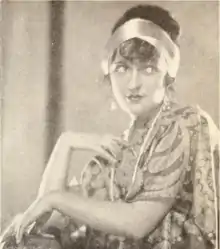
Myers married attorney and song writer Isidore "I.B." Kornblum[11] on July 16, 1919; they divorced in 1923.[12][13]
Myers and attorney Ralph H. Blum married on June 9, 1929,[14] and had three children: author Ralph H. Blum (born 1932), known for his works on divination through Norse runes, and two adopted daughters, actress and radio personality Susan Adams Kennedy (born 1940) and television producer Mary Cossette (born 1941). Myers and Blum purchased Gloria Swanson's Sunset Boulevard home.
On October 30, 1951, Myers married Paramount Pictures executive Alfred W. Schwalberg in Brooklyn.[7] They were married until his death in 1974.
Death
Myers died of a heart attack on November 9, 1980, in Los Angeles Medical Center at the age of 81.[3] She was buried near her parents at Home of Peace Cemetery in East Los Angeles. Her epitaph reads "L'Chaim", which is Hewbrew for "to life".
Partial filmography

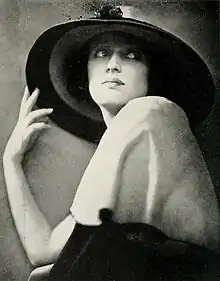
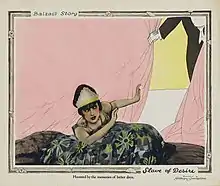
- Georgia Pearce (1915)
- Intolerance (1916) as Favorite of the Harem (uncredited)
- The Heiress at Coffee Dan's (1916) as Waitress (uncredited)
- The Bad Boy (1917) as Bit Role (uncredited)
- Stage Struck (1917) as Bit Role (uncredited)
- A Love Sublime (1917) as Toinette
- A Daughter of the Poor (1917) as Hazel Fleming
- Might and the Man (1917) as Winifred
- The Haunted Pajamas (1917) as Frances Kirkland
- Sirens of the Sea (1917) as Julie
- The Lash of Power (1917) as Marion Sherwood
- My Unmarried Wife (1918) as Mary Cunningham
- The Wife He Bought (1918) as Janice Brieson
- The Girl in the Dark (1918) as Lois Fox
- The Wine Girl (1918) as Bona
- The Marriage Lie (1918) as Eileen Orton
- A Broadway Scandal (1918) as Nenette Bisson
- The City of Tears (1918) as Rosa Carillo
- The Dream Lady (1918) as Rosamond Gilbert
- A Society Sensation (1918, short) as Sydney Parmelee
- All Night (1918) as Elizabeth Lane
- Who Will Marry Me? (1919) as Rosie Sanguinetti
- The Little White Savage (1919) as Minnie Lee
- In Folly's Trail (1920) as Lita O'Farrell
- The Gilded Dream (1920) as Leona
- Beautifully Trimmed (1920) as Norine Lawton
- The Mad Marriage (1921) as Jane Judd
- The Dangerous Moment (1921) as Sylvia Palprini
- Cheated Love (1921) as Sonya Schonema
- The Kiss (1921) as Erolinda Vargas
- Breaking Through (1921) as Bettina Lowden
- A Daughter of the Law (1921) as Nora Hayes
- The Love Gambler (1922) as Jean McClelland
- The Danger Point (1922) as Alice Torrance
- The Last Hour (1923) as Saidee McCall
- The Famous Mrs. Fair (1923) as Angy Brice
- Good-By Girls! (1923) as Florence Brown
- The Little Girl Next Door (1923) as Milly Amory
- Mary of the Movies (1923) as Herself (uncredited)
- Slave of Desire (1923) as Countess Fedora
- The Dancer of the Nile (1923) as Arvia
- The Love Pirate (1923) as Ruby Le Maar
- Reno (1923) as Mrs. Dora Carson Tappan
- Poisoned Paradise: The Forbidden Story of Monte Carlo (1924) as Mrs. Belmire
- Beau Brummel (1924) as Lady Hester Stanhope
- Broadway After Dark (1924) as Lenore Vance
- Babbitt (1924) as Tanis Judique
- Garragan (1924)
- Ben-Hur: A Tale of the Christ (1925) as Iras
- The Devil's Circus (1926) as Yonna
- The Gay Deceiver (1926) as Countess de Sano
- Tell It to the Marines (1926) as Zaya
- Camille (1926, short) as Agatha
- The Demi-Bride (1927) as Madame Girard
- The Understanding Heart (1927) as Kelcey Dale
- The Girl from Rio (1927) as Lola
- Sorrell and Son (1927) as Flo Palfrey
- A Certain Young Man (1928) as Mrs. Crutchley
- Prowlers of the Sea (1928) as Mercedes
- Four Walls (1928) as Bertha
- Dream of Love (1928) as The Countess
- The Ghost Talks (1929) as Marie Haley
- Careers (1929) as The Woman
- The Careless Age (1929) as Rayetta
- Broadway Scandals (1929) as Valeska
- The Red Sword (1929) as Katherine
- The Show of Shows (1929) as Performer in 'Ladies of the Ensemble' Number
- The Ship from Shanghai (1930) as Viola Thorpe
- A Lady Surrenders (1930) as Sonia
- The Lion and the Lamb (1931) as Inez
- Svengali (1931) as Madame Honori
- Pleasure (1931) as Mrs. Dorothy Whitley
- Chinatown After Dark (1931) as Madame Ying Su
- The Mad Genius (1931) as Sonya Preskoya
- Nice Women (1931) as Dorothy Drew
- No Living Witness (1942) as Emillia
- The Countess of Monte Cristo (1934) as Flower Girl
- Lady for a Night (1942) as Mrs. Dickson
- The Conspirators (1944) as Baroness von Kluge (uncredited)
- George White's Scandals (1945) as Leslie (uncredited)
- Whistle Stop (1946) as Estelle
- Won Ton Ton, the Dog Who Saved Hollywood (1976) as Woman Journalist (final film role)
References
- ↑ https://www.ancestry.com/imageviewer/collections/7602/images/4112014_00451?usePUB=true&_phsrc=um5-735579&_phstart=successSource&usePUBJs=true&pId=6414114
- ↑ https://www.ancestry.com/imageviewer/collections/1174/images/USM1490_2431-0730?pid=1139830&backurl=https://search.ancestry.com/cgi-bin/sse.dll?indiv%3D1%26dbid%3D1174%26h%3D1139830%26tid%3D%26pid%3D%26queryId%3D16166dc4b0b1aa98cbdc3ef1fbfe83b8%26usePUB%3Dtrue&treeid=&personid=&hintid=&queryId=16166dc4b0b1aa98cbdc3ef1fbfe83b8&usePUB=true&usePUBJs=true&_ga=2.24734009.288913918.1621041567-933749568.1620085902
- 1 2 3 Barbanel, Josh (November 19, 1980). "Carmel Myers, Silent Movie Star Who Played Wicked Women, 80". The New York Times. p. A 31. ProQuest 121324722. Retrieved March 14, 2021 – via ProQuest.
- ↑ Carmel Myers biography, filmography Archived July 29, 2008, at the Wayback Machine at Starpulse
- ↑ Greenberg, Dan. "Carmel Myers: 1900-1980". Encyclopedia. Jewish Women's Archive. Archived from the original on November 11, 2014. Retrieved March 14, 2021.
- ↑ "Behind the Microphone" (PDF). Broadcasting. February 1, 1932. p. 17. Retrieved March 14, 2021.
- 1 2 "Carmel Myers of TV Is Wed". The New York Times. October 31, 1951. p. 34. ProQuest 111965940. Retrieved March 14, 2021 – via ProQuest.
- ↑ "TV Nets Revamp P'kge Prices, Accent Lower" (PDF). Billboard. June 16, 1951. p. 5. Retrieved March 14, 2021.
- ↑ "Package Firm" (PDF). Broadcasting. October 6, 1952. p. 58. Retrieved March 14, 2021.
- ↑ "Worth A Try". The New York Times. March 2, 1952. p. BR 23. ProQuest 112263234. Retrieved March 14, 2021 – via ProQuest.
- ↑ "Carmel Myers Divorces Lawyer". The New York Times. July 7, 1923. p. 22. ProQuest 103123279. Retrieved March 14, 2021 – via ProQuest.
- ↑ York, Cal (October 1923). "Gossip—East and West". Photoplay Magazine. Vol. 24, no. 5. p. 92.
- ↑ Oliver, Myrna (November 14, 1996). "I.B. Kornblum, 101; Composer, Lawyer and Union Organizer". Los Angeles Times.
- ↑ "Carmel Myers weds". The New York Times. Associated Press. June 10, 1929. p. 11. ProQuest 104985545. Retrieved March 14, 2021 – via ProQuest.
External links
- Carmel Myers at IMDb
- Carmel Myers at the Internet Broadway Database
- Carmel Myers Photo Gallery at Silent-Movies.org
- Carmel Myers at Virtual History